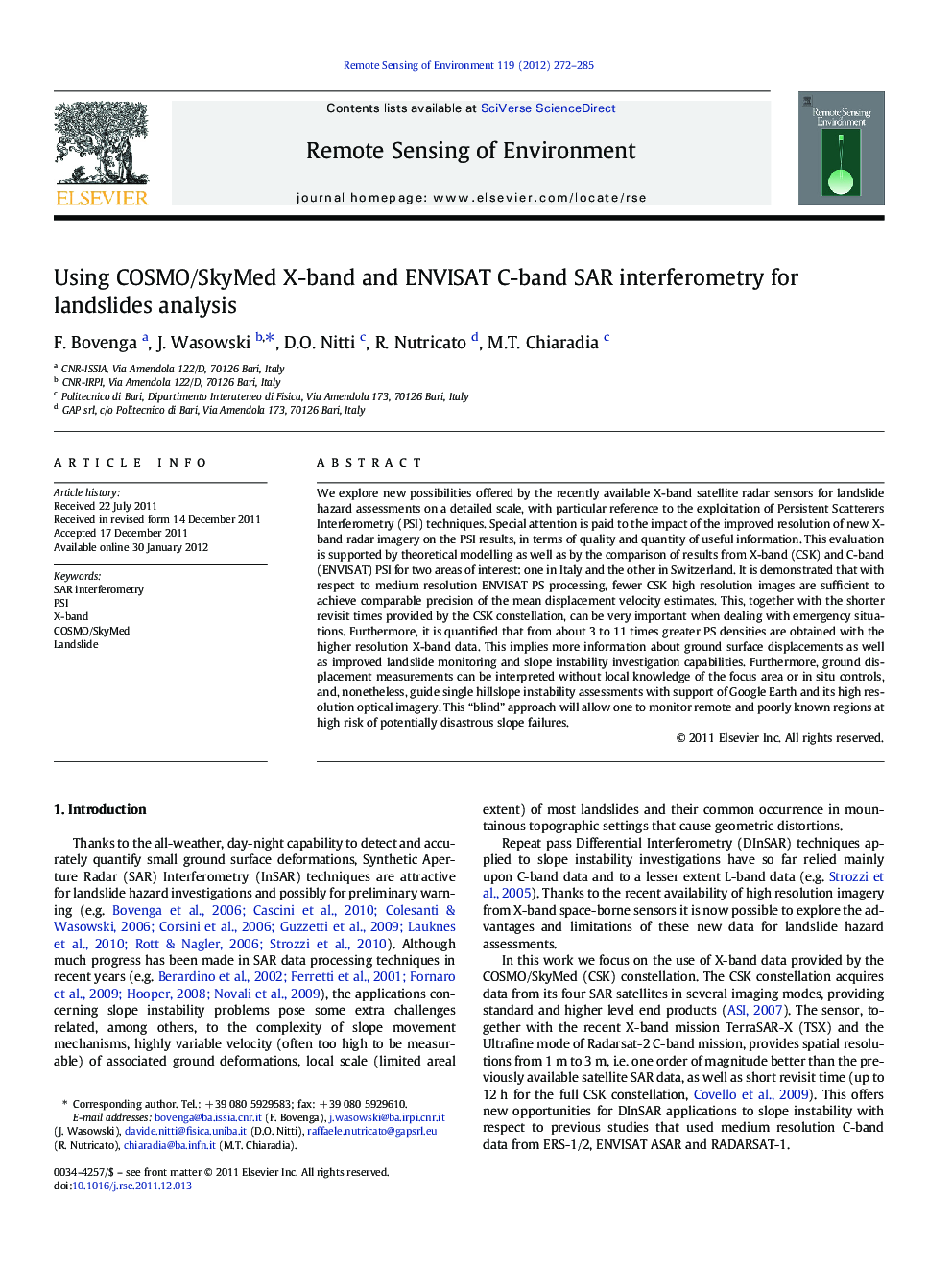| Article ID | Journal | Published Year | Pages | File Type |
|---|---|---|---|---|
| 4459217 | Remote Sensing of Environment | 2012 | 14 Pages |
We explore new possibilities offered by the recently available X-band satellite radar sensors for landslide hazard assessments on a detailed scale, with particular reference to the exploitation of Persistent Scatterers Interferometry (PSI) techniques. Special attention is paid to the impact of the improved resolution of new X-band radar imagery on the PSI results, in terms of quality and quantity of useful information. This evaluation is supported by theoretical modelling as well as by the comparison of results from X-band (CSK) and C-band (ENVISAT) PSI for two areas of interest: one in Italy and the other in Switzerland. It is demonstrated that with respect to medium resolution ENVISAT PS processing, fewer CSK high resolution images are sufficient to achieve comparable precision of the mean displacement velocity estimates. This, together with the shorter revisit times provided by the CSK constellation, can be very important when dealing with emergency situations. Furthermore, it is quantified that from about 3 to 11 times greater PS densities are obtained with the higher resolution X-band data. This implies more information about ground surface displacements as well as improved landslide monitoring and slope instability investigation capabilities. Furthermore, ground displacement measurements can be interpreted without local knowledge of the focus area or in situ controls, and, nonetheless, guide single hillslope instability assessments with support of Google Earth and its high resolution optical imagery. This “blind” approach will allow one to monitor remote and poorly known regions at high risk of potentially disastrous slope failures.
► Inference of PS motions requires fewer SAR scenes from COSMOSkyMed than from ASAR. ► PS density from COSMOSkyMed SAR data is from ~ 3 to 11 times higher than from ASAR. ► More detailed scale landslide study possible with higher resolution SAR data. ► PS interferometry results interpreted with little ground information. ► Google Earth tools facilitate interpretation of PSI results in poorly known areas.
